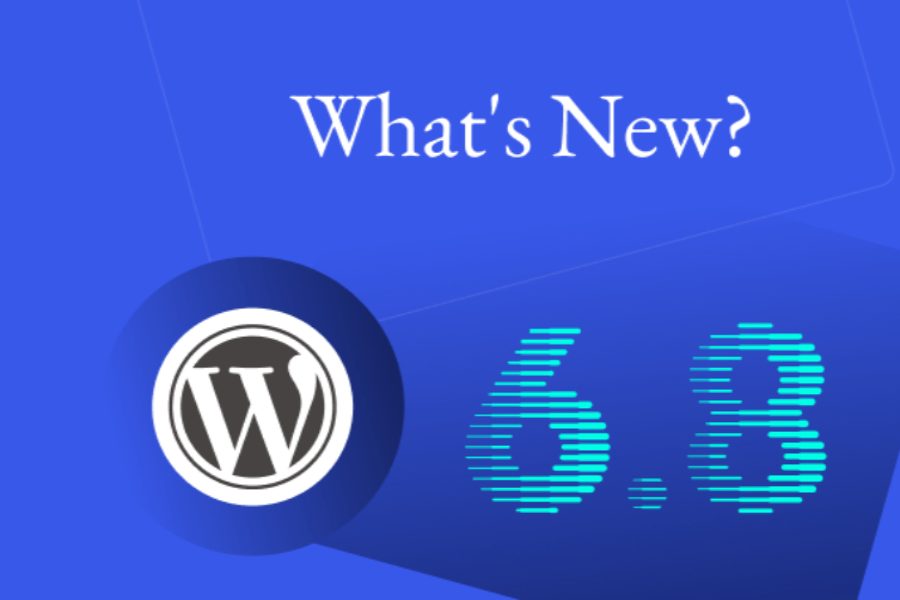WordPress 6.8 Launches with Game-Changing Speed, Design, and Security Upgrades

WordPress 6.8 has officially landed, and it’s loaded with powerful upgrades that make site management faster, smarter, and more secure. As the first major release of 2025, this version is more than just a performance patch — it’s a full-fledged evolution of how users build and manage websites on the world’s most popular CMS.
One of the biggest highlights is speculative loading, a behind-the-scenes technology that preloads pages as users hover over links. This means pages feel nearly instant when clicked. It’s like your website is reading your visitors’ minds. Thanks to the Speculation Rules API, developers can set custom rules to control how and when these preloads happen. For users who’ve struggled with slow page loads, this feature is a silent revolution.
Design lovers are also in for a treat. The Style Book, previously exclusive to block themes, now works with classic themes that support the Full Site Editor. This means even users who haven’t made the leap to full block-based design can enjoy a centralized visual overview of all their site’s blocks. Buttons, headings, forms — you can now see them styled in one neat interface. Even better, site patterns have been reorganized under Appearance » Design » Patterns, which helps streamline the styling process.
Customization tools across the board have seen upgrades. WordPress 6.8 lets you designate any image block as a featured image with a single click, saving precious time during post creation. The global styles panel inside the Site Editor has also been revamped to make it easier to adjust fonts, spacing, colors, and more — all from one sidebar. Switching section styles is now available from the toolbar in zoomed-out mode, making layout tweaks lightning fast.
Another smart addition is the ability to undo image edits like cropping or rotating, which now shows a quick revert option immediately after the change. A new block called Query Total allows users to show the number of posts in a query loop — ideal for archive and search pages. WordPress also makes it easier to assign a page as your blog’s post page directly from the page list, avoiding the old back-and-forth with Settings menus.
Content creators have long been frustrated by sticky posts disrupting custom layouts. That ends in WordPress 6.8. You now have the option to ignore sticky posts inside Query Loops, giving you more control over how content is presented on category pages or blog archives.
On the backend, there are subtle but impactful improvements to the Data Views experience. The layout is more consistent across different post types. Admins can now toggle grid view content previews for pages, and table densities in list views can be adjusted to fit more or less content on the screen, depending on your workflow. These admin-facing tweaks are designed to make content management more comfortable and efficient.
Security also gets a much-needed upgrade. WordPress has replaced the old MD5-based password hashing system with bcrypt, a modern and significantly more secure algorithm. Bcrypt makes it more difficult for attackers to brute-force passwords by increasing the amount of time it takes to process each guess. Even though users don’t have to make any changes themselves, this update strengthens site protection silently in the background. For even better security, users are still encouraged to use two-factor authentication.
Other small changes in the release bring polish and consistency to the platform. The label “Add Item” is now used uniformly across the admin interface instead of “Add New Item.” The date format section now has more pre-built options, helping users who aren’t comfortable creating custom date formats. Embedding Canva designs is now possible through the oEmbed block, making it easier to showcase graphics in blog posts. Accessibility has also been improved — focus styles are cleaner, and screen readers have better navigation cues for forms and links.
Developers will appreciate some of the deeper technical upgrades. A new function allows registering multiple block types at once, making plugin code more efficient. The Interactivity API has released best practice guidelines to help developers build smoother front-end experiences. The REST API now allows navigation menus to be exposed publicly — a big win for headless WordPress sites and JavaScript-based frontends.
Error message localization has also improved, especially around PHPMailer and plugin update emails. Block Hooks now work with synced patterns, enabling consistent functionality across post content and template parts. Site owners can now even remove the “Disable the visual editor” checkbox from user profiles, simplifying the editing experience for teams. Lastly, new contextual classes on the tag make it easier for developers to style specific areas of their site with CSS.
All in all, WordPress 6.8 is one of the most well-rounded releases in recent memory. It doesn’t just make your site faster — it improves the creative workflow, tightens security, and refines the admin experience in meaningful ways. From speculative loading to site editor upgrades and stronger password hashing, each feature feels intentional and user-focused.
If you’re running a WordPress site, now’s the perfect time to upgrade. Just remember to back up your site before clicking the update button. Once you’re in, take a few moments to explore these enhancements — they’re practical, powerful, and designed to help you build better websites with less friction.
And if you’re the kind of user who likes to stay ahead of the curve, keep an eye on future updates by subscribing to WordPress-focused YouTube channels or following updates on Twitter and Facebook. WordPress 6.8 is a testament to the platform’s continued growth — and a clear signal that the best is yet to come.
